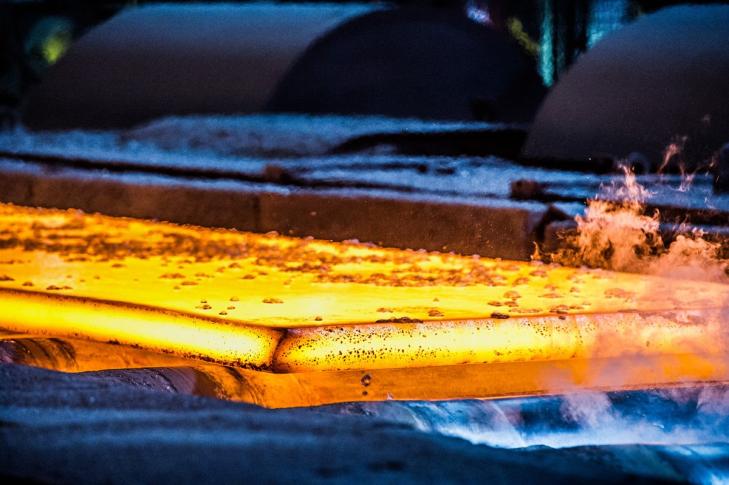
EU steel emissions to see higher penalties as free allowances get taken away
EU steel production emissions will be gradually penalized further from 2026 through to 2034, which will lead to higher costs for existing steel production and incentivize lower-emissions output.
The penalties based on carbon emissions emitted by key steel and raw materials production processes will increase under the EU’s Emissions Trading System and Carbon Border Adjustment Mechanism.
EU steel processes will see the quantity of allocated free emissions allowances reduce in a non-linear trajectory from existing levels to zero by 2034. This will lead to heavier emissions costs for producers forced to buy EU Allowance, or EUA, carbon permits for compliance. The ETS free allowances are to be replaced by the CBAM from 2026 and 2034.
The removal of free EUAs would lead to additional costs for steel producers exceeding benchmark levels. Based on reference values for blast furnace-based steel mills producing met coke and iron ore sinter, higher costs of around Eur144.72/mt of finished steel can be expected, with a reference cost for electric arc furnace carbon steel producers of Eur18.93/mt of steel, using July average EU carbon prices and analysis by S&P Global Commodity Insights.
Related podcast: How is Europe’s steel industry rising to the challenge of energy transition
Steel producers with higher operating emissions will be encouraged to adapt steel processes and raw materials usage, as well as invest, to transition more of the region’s production to steel with lower embedded emissions.
The alternative would be to pay to offset the difference, assuming risks on forward carbon pricing and using any banked EUAs available.
The dilemma may be how to manage the higher costs of alternative raw materials such as iron ore pellets and high-grade ferrous scrap, along with supporting the energy transition to use green hydrogen and renewable power and cut coal-based fuels.
Investment in new plants and processes to achieve low-emissions steelmaking have pushed steel companies such as Salzgitter and Thyssenkrupp to seek government subsidies and grants.
A move to certify emissions in steel production and mining, logistics and processing has allowed carbon-accounted steel markets to develop in the past few years.
Europe has led the interest in carbon-accounted steel and industry decarbonization, followed by Canada and the US and some markets in Asia.
The CBAM’s effect on global seaborne steel trade is anticipated to further deepen the interest in carbon-accounted steel production and marketing.
Steel end-users and steel processing and distribution groups are looking to adapt steel supplies for consumers, and to meet new procurement targets and standards. This is also pushing for more transparency around steel’s carbon intensities, with interest led by industry and government bodies.
Steel producers are currently obliged by the EU to report and pay for emissions from installations in the region based on the defined categories of hot metal production, iron ore sintering, met coke production and two types of electric arc furnace steel production.
Scope 3 emissions for steelmakers, emitted from raw materials mining, processing and logistics, are not included under the ETS reporting scheme.
The incoming CBAM will be applied for steel, pig iron and direct-reduced iron product imports, among other markets such as for aluminum, cement, hydrogen and fertilizers.
The CBAM aims to require the same carbon emissions cost being paid for imports as relevant to EU steel and other products, ensuring a level playing field and complying with World Trade Organization rules. The mechanism will take into account EU ETS and free allowances levels for applicable markets as the frameworks converge, in relation to certified carbon emissions for import products.
CBAM will develop reference emissions values for product categories where reported carbon intensity data is not available prior to the mechanism’s launch on Jan. 1, 2026.
Importers to the EU will buy CBAM certificates to comply with any outstanding product emissions costs required. CBAM certificates will price based on weekly EU Allowance pricing.
The CBAM will enter into application in its transitional phase on Oct. 1, with the first reporting period for importers ending Jan. 31, 2024.
Reporting obligations and information sought from EU importers of CBAM goods, as well as a provisional methodology for calculating embedded emissions released during the production process of CBAM-related imports will be specified further in an Implementing Regulation. This legislation will be adopted by the European Commission after consulting the CBAM Committee.
The CBAM and ETS will apply charges with adjustments available for steel production processes through to 2034, which mean steel imports are expected initially to pay a similar carbon-based charge. CBAM is not expected to include upstream Scope 3 emissions, emitted from mining and processing, logistics and transportation of steel raw materials.
Imported flat and long steels produced with ferrous scrap and direct-reduced iron may compete with more emissions-intensive steel in certain grades and segments.
European steel markets and user groups are increasingly differentiating on pricing and demand between steel with carbon emissions data reported for Scope 1, 2 and 3, and whether direct emissions cuts or mass balance-based calculated emissions reductions are involved.
A variation between the ETS and steel production emissions compliance, and a new focus on product-level carbon intensity with upstream emissions is seen. This considers emissions in the entire production chain and any differences between steel imports and EU origin products.
EU safeguards already place quotas on steel imports by origin. CBAM is designed to help ensure imports are on a level playing field with EU products and emissions costs, and support investments in industry decarbonization.
The reduction in the steel sector’s free EUAs may lead to higher compliance costs for steel producers if they cannot decarbonize at the same rate, as companies fund high capital greenfield plants.

